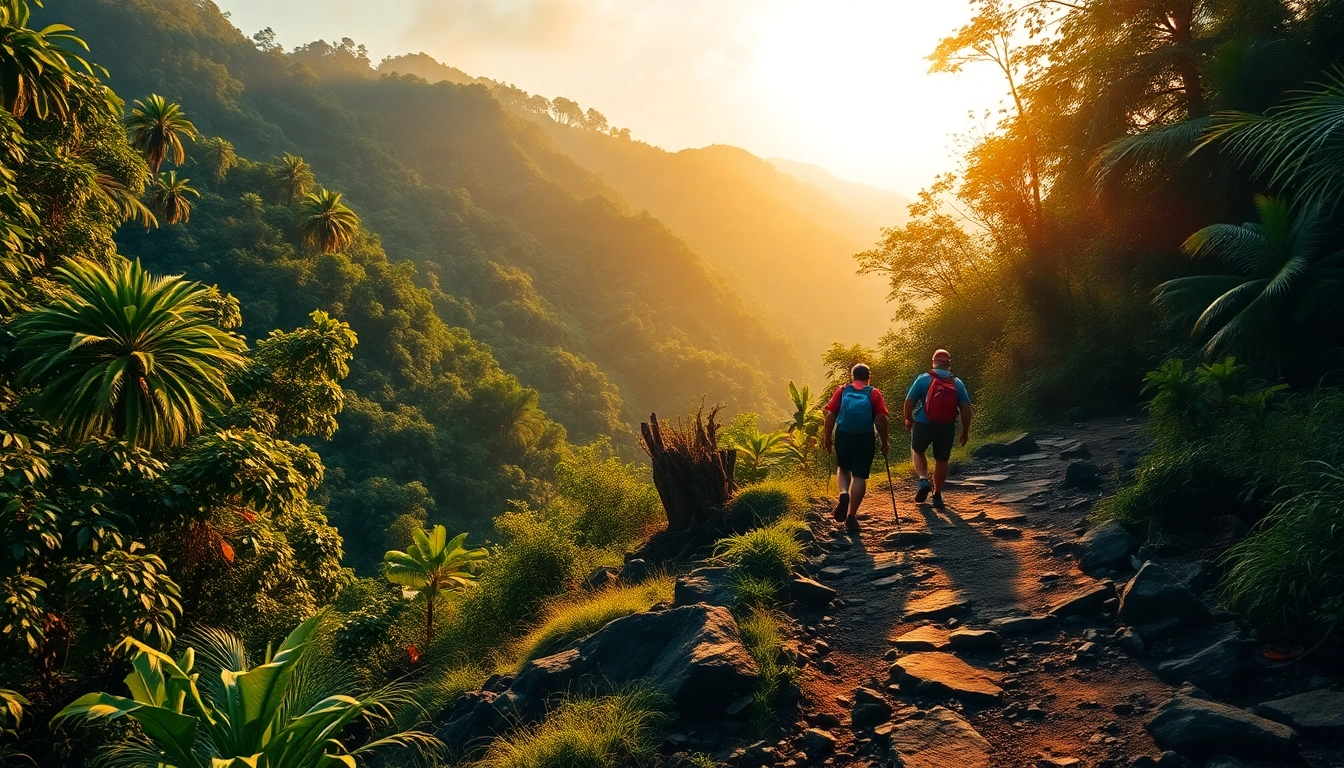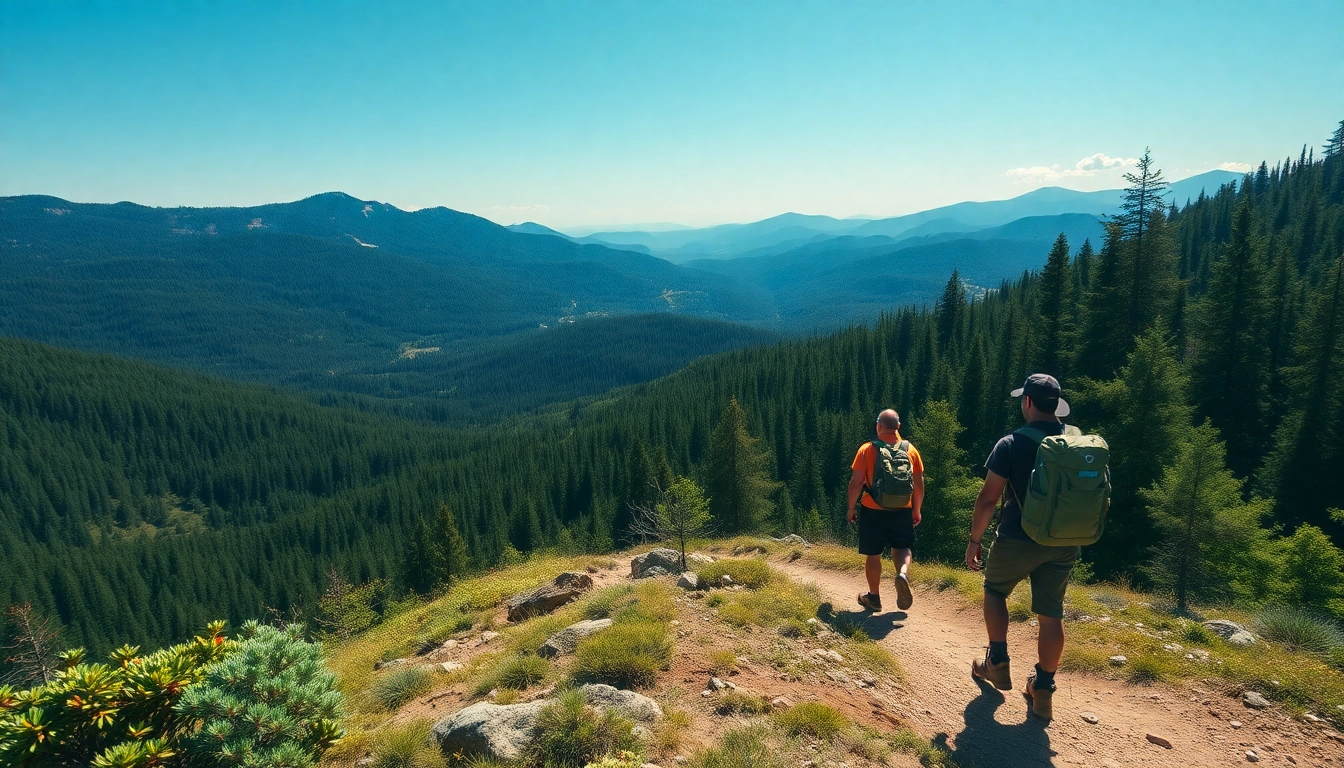The Basics of Trekking in Indonesia
Understanding What Trekking Entails
Trekking is an exhilarating outdoor activity characterized by long, vigorous walks through remote, often wild natural environments. Unlike casual hiking, trekking usually involves multi-day journeys across rugged terrains, requiring substantial physical endurance and mental resilience. In Indonesia, this activity offers an unparalleled opportunity to explore the country’s diverse landscapes—from volcanic mountains and lush jungles to pristine beaches and hidden waterfalls. For those eager to immerse themselves deeply in nature, trekking becomes a way of life, offering both adventure and a profound connection with the environment.
Fundamentally, trekking entails navigating through challenging terrains that may include steep inclines, uneven paths, and river crossings. It demands not only stamina but also strategic planning regarding supplies, navigation, and safety precautions. Unlike hiking, which might be a short day trip, trekking encompasses prolonged excursions that may last several days, often off established trails. This aspect of long-duration adventure makes trekking a unique pursuit rooted in exploration, self-reliance, and environmental stewardship.
What Makes Trekking Different?
While the terms “trekking” and “hiking” are frequently used interchangeably, they embody distinct experiences. Hiking generally refers to shorter outdoor walks that can be completed within a day and are often on well-marked trails. Trekking, by contrast, signifies a more demanding journey that spans multiple days, often involving overnight stays in tents, basic lodges, or eco-resorts. In Indonesia, the differences are even more pronounced due to the country’s rugged islands and varied topography, where trekking routes may include mountain ascents, jungle crossings, and remote village visits.
According to various sources, a key distinction lies in the duration and intensity of the activity. While hiking might involve a few hours on maintained paths, trekking entails continuous movement over challenging terrains for consecutive days. This makes trekking ideal for adventure seekers looking to push their physical and mental limits while immersing themselves in pristine nature.
Why Trekking Is Gaining Popularity in Indonesia
Indonesia’s rich tapestry of landscapes—mountains, forests, and coastline—renders it a haven for trekkers. Noteworthy destinations like Mount Rinjani in Lombok, the volcanic ranges in Sumatra, and unexplored jungle trails in Kalimantan and Sulawesi attract both local and international adventurers. The activity not only promotes physical wellbeing but also fosters environmental awareness and cultural appreciation by engaging travelers with local communities and indigenous cultures.
With increasing awareness of sustainable tourism and eco-adventures, trekking in Indonesia is emerging as a responsible way to experience the country’s natural beauty while supporting local economies. Whether you’re a seasoned trekker or a passionate beginner, Indonesia offers routes suitable for all levels of expertise.
Differences Between Trekking and Hiking
Duration and Intensity
One of the clearest differentiators is the duration. Hiking generally refers to short, leisurely walks, often lasting a few hours, designed for recreation and easy access to scenic spots. Trekking, on the other hand, involves multiple days’ journeying through more demanding environments, requiring careful planning and endurance.
Skill and Preparation
While hiking can often be accessible with minimal prior experience, trekking demands higher levels of physical fitness, navigation skills, and environmental literacy. Trekkers must prepare for unpredictable weather, complex terrains, and potential emergencies. Knowledge of survival techniques, first aid, and outdoor ethics become integral to successful trekking adventures.
Terrain and Environment
Hiking trails are commonly well-maintained, often featuring clear signage and designated paths. Trekking routes, however, traverse off beaten tracks across mountains, dense forests, and remote areas. These routes challenge trekkers with natural obstacles and require a greater sense of adventure and adaptability.
Environmental Impact and Responsible Tourism
Responsible trekking emphasizes minimizing ecological footprints, respecting local cultures, and ensuring sustainability. Tourists engaging in trekking activities in Indonesia are encouraged to follow Leave No Trace principles, support local communities, and contribute to conservation efforts. Proper planning, waste management, and cultural sensitivity are essential components of eco-friendly trekking.
Essential Gear for Trekking Adventures
- Footwear: Robust hiking boots with ankle support, waterproofing, and good grip are vital for navigating rugged terrains.
- Clothing: Moisture-wicking layers, thermal wear for cold conditions, and waterproof jackets help adapt to changing weather.
- Navigation Tools: GPS devices, maps, and compasses ensure proper route planning and safety.
- Backpack: A durable, appropriately-sized backpack for carrying essentials such as food, water, and spare clothing.
- Camping Equipment: Tents, sleeping bags, and portable stoves for multi-day treks requiring overnight stays.
- Safety Accessories: First aid kits, multi-tools, headlamps, and whistles are crucial for emergency situations.
- Environmental Supplies: Reusable water bottles, biodegradable toiletries, and waste disposal bags support eco-friendly practices.
Advanced trekkers might also consider trekking poles, gaiters, and technical gear for specialized terrains. Proper gear not only enhances comfort and safety but also reduces environmental impact by minimizing trail damage.
Preparing for a Trekking Expedition
Physical Fitness and Mental Readiness
Successful trekking demands a high level of physical fitness. Endurance training, including cardiovascular exercises, strength building (especially in legs and core), and flexibility routines, prepares the body for the physical toll of extended hikes. Building mental resilience is equally important, as trekkers must navigate unpredictable challenges—from sudden weather changes to navigational difficulties.
A practical approach involves regular hiking practice, simulating the conditions of the planned route, and gradually increasing difficulty and duration. Mental preparation through visualization, mindfulness, and contingency planning enhances confidence and adaptability, crucial traits for wilderness navigation.
Planning Routes and Accommodations
Detailed planning is the backbone of a successful trekking adventure. This includes studying topographical maps, understanding the local environment, and securing permits where necessary. Selecting routes that match your skill level and physical conditioning avoids undue risk.
Accommodation options vary from camping in tents to staying in eco-lodges or small hostels along the trail. In Indonesia, many trekking routes pass through indigenous villages where community-based tourism offers authentic cultural exchanges and supports local economies.
Safety Tips and Environmental Responsibility
Safety should be a top priority. Always inform someone about your itinerary, carry a communication device, and be prepared for emergencies. Check weather forecasts and avoid trekking during adverse conditions.
Environmental responsibility entails respecting wildlife, plants, and local cultures. Maintain trail integrity by staying on designated paths, disposing of waste properly, and supporting conservation initiatives. Sustainable trekking ensures that these pristine environments remain accessible for future generations.
Popular Trekking Destinations in Indonesia
Mount Rinjani and Volcano Trails
Mount Rinjani, Indonesia’s second-highest volcano, stands as a premier trekking destination on Lombok Island. Its summit offers breathtaking views of the surrounding islands, crater lakes, and lush rainforests. The trek typically takes 2-3 days, challenging hikers to ascend rugged volcanic slopes and traverse variable terrain.
Besides Rinjani, other volcanic trails include Mount Semeru and Mount Kerinci, each offering unique landscapes and cultural experiences. These mountain adventures attract seasoned trekkers seeking elevation gains, panoramic landscapes, and the chance to witness volcanic activity.
Jungle Treks in Lombok and Sumatra
Dense rainforests in Lombok’s northern jungles and Sumatra’s Gunung Leuser National Park present opportunities for jungle trekking. These routes immerse explorers in biodiversity-rich ecosystems, home to orangutans, tigers, and exotic flora.
Trekking through these environments requires navigation skills, awareness of wildlife behavior, and adherence to conservation principles, making guided tours highly recommended to ensure safety and ecological integrity.
Hidden Trails and Off-the-Beaten-Path Adventures
For seasoned trekkers seeking solitude and authentic experiences, Indonesia offers hidden trails rarely trodden by mass tourism. These paths wind through remote villages, unspoiled beaches, and untouched forests, providing a sense of discovery and cultural immersion.
Examples include the Togean Islands in Central Sulawesi and the less-known regions of Papua. These adventures often involve logistical planning but reward travelers with pristine landscapes and meaningful encounters with local communities.
Enhancing Your Trekking Experience
Using Trekking Poles and Other Accessories
Trekking poles are invaluable tools that provide stability, reduce joint stress, and improve posture over challenging terrains. They are especially beneficial on steep ascents or descents, helping prevent injuries and fatigue.
Other accessories like hydration packs, insect repellent, and lightweight quick-dry clothing greatly improve comfort and safety. Proper use of gear enhances enjoyment and minimizes the physical toll of long-distance trekking.
Nutrition and Hydration Strategies
Maintaining energy levels during trekking requires a balanced intake of carbohydrates, proteins, and fats. Energy bars, dried fruits, and nuts serve as convenient snacks, while water and electrolyte drinks keep hydration optimal.
In Indonesia’s tropical climate, dehydration and heat exhaustion are common risks. Trekkers must plan their hydration schedules, carry sufficient water, and utilize purification devices if sourcing water from natural sources.
Capturing and Sharing Your Journey
Documenting your trek through photography, journaling, or social media not only preserves memories but also inspires others and promotes responsible tourism. Use lightweight camera gear and consider battery backups for extended trips.
Sharing stories about local cultures, environmental conservation, and personal growth can contribute to raising awareness about Indonesia’s natural beauty and the importance of sustainable practices.
Benefits and Long-Term Rewards of Trekking
Health and Fitness Improvements
Regular trekking significantly enhances cardiovascular health, builds muscular endurance, and improves flexibility. The activity engages multiple muscle groups, promoting weight management and bone strength.
Specific to Indonesia’s challenging terrains, trekking also boosts balance and coordination, reducing the risk of lifestyle-related ailments such as hypertension and diabetes.
Mental Clarity and Stress Relief
Immersing oneself in nature has profound mental health benefits. Trekking provides an escape from daily stressors, fostering mindfulness and mental clarity. The rhythmic motion combined with natural surroundings enhances mood and reduces anxiety.
Connecting with Nature and Local Communities
Trekking in Indonesia offers authentic cultural exchanges with indigenous tribes and local populations. Interacting with these communities fosters mutual understanding, respect, and support for conservation projects.
Furthermore, responsible trekking contributes to sustaining local economies, empowering communities through eco-tourism initiatives that preserve their cultural heritage and natural resources.

